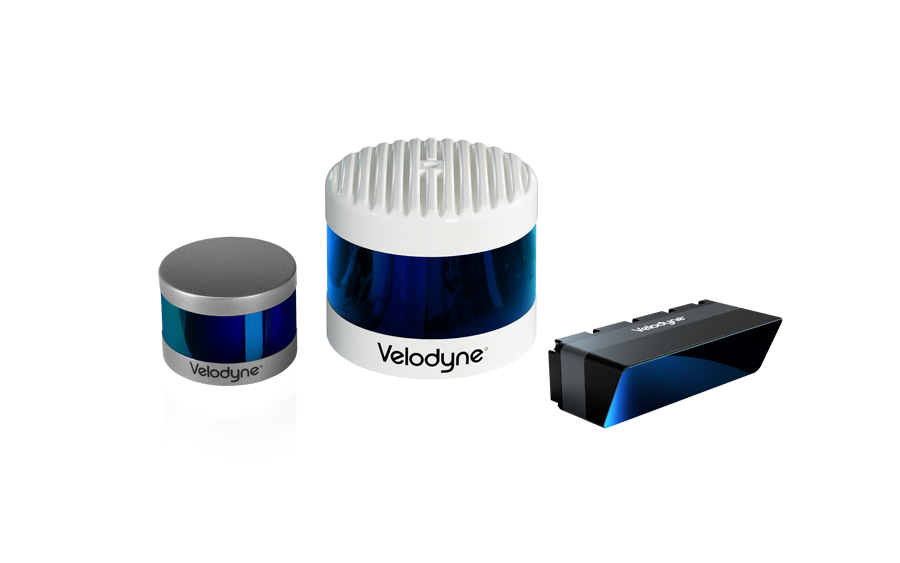
A rescue squad’s speed and efficiency can mean the difference between life and death for someone lost or trapped due to nature’s fury or an accident. Highly trained rescue workers and volunteers coordinate their efforts to locate a missing person and then plan the best method of extraction to get them to safety. Unfortunately, bad weather and treacherous terrain can hamper location and extraction efforts and limit as the effectiveness of search tools like cameras and rescue dogs.
Heavily Wooded Areas:
One of the most common applications for LiDAR is mapping. A LiDAR unit works by firing lasers from the unit and then recording how long it takes the laser to hit an object and return to the unit. Most LiDAR units are equipped with more then one laser, such as the Velodyne VLP 16 Lite, which contains sixteen laser channels. The more lasers a LiDAR unit has, the more data the unit is able to pick up during a scan. The lasers can find even the smallest gaps between objects, allowing a LiDAR unit to map between the leaves of a forest canopy. These scans can accurately note the height of trees, determine forest density, and even map uneven ground beneath trees and shrubs. In most cases, the LiDAR unit is mounted on a drone or small airplane and flown over the area that rescue teams wish to map.
The advanced mapping capabilities of LiDAR have great potential to aid in search and rescue efforts. Not only can a LiDAR sensor assist in identifying a human form on any given terrain, it can also be used to plot the most efficient route to the lost person. Knowing what type of hazards the rescue team may face, such as treacherous terrain or large predators, will increase the efficiency of rescue efforts and minimize injury to the rescue team.
Inclement Weather:
Airborne cameras often aid search efforts when time is an important factor or an area is not easily accessible by foot or vehicle. Unfortunately, cameras are not reliable search aids during bad weather or darkness, unless the camera has night vision.
LiDAR, unlike cameras, does not require light to capture data, making them it valuable tool during night rescues. LiDAR is also not impeded by rain, as the lasers can find the gaps between raindrops and continue to capture data. Being undeterred by bad weather is a huge advantage in search and rescue efforts when time is an important factor, especially in cases where hypothermia is a threat.
Man Overboard
Water rescues often prove to be exceptionally difficult. Choppy water makes it incredibly difficult to spot a person floating in the water, even from the added height of a helicopter. In addition, freezing temperatures and predators add to the need to find a person lost at sea as quickly as possible.
When dealing with bodies of water, Bathymetric LiDAR is most commonly used. The system uses two different pulses to map and measure bodies of water. First, the system sends out a low frequency infrared laser pulse, which is reflected off of the surface of the water. Secondly, the system uses a higher frequency green laser that can penetrate water and reflect off of the ocean floor.
Since the low frequency infrared pulse reflects off of the water’s surface, and does not penetrate the water, it is extremely effective at locating objects that are partially submerged in the water, such as humans or wreckage. An unmanned aerial vehicle or a helicopter with a LiDAR unit mounted on the bottom would be able to fly over large bodies of water and find partially submerged objects significantly faster then with a camera or the naked eye.
As technology continues to advance, research and development teams shall keep working to find new ways to make our world a safer place. We at Velodyne LiDAR shall continue to do our part and build a safer world one sensor at a time.

Velodyne Lidar (Nasdaq: VLDR, VLDRW) ushered in a new era of autonomous technology with the invention of real-time surround view lidar sensors. Velodyne, a global leader in lidar, is known for its broad portfolio of breakthrough lidar technologies. Velodyne’s revolutionary sensor and software solutions provide flexibility, quality and performance to meet the needs of a wide range of industries, including robotics, industrial, intelligent infrastructure, autonomous vehicles and advanced driver assistance systems (ADAS). Through continuous innovation, Velodyne strives to transform lives and communities by advancing safer mobility for all.